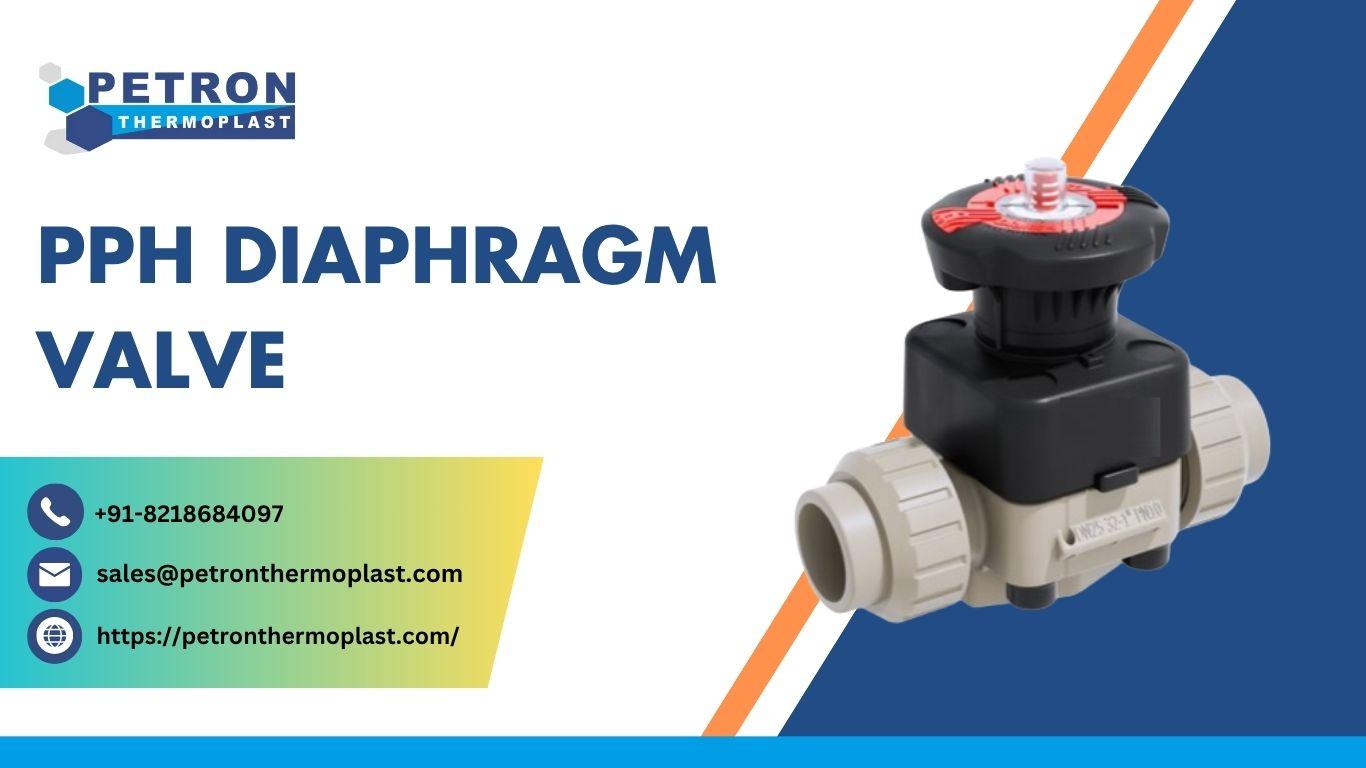Notifications

7 minutes, 5 seconds
-9 Views 0 Comments 0 Likes 0 Reviews

In modern chemical processing systems, reliable flow control is not just a preference—it’s a necessity. With aggressive fluids, high temperatures, and pressure-sensitive operations, every component in the piping system must be chosen with care. One such vital component is the pph diaphragm valve, and when constructed from PPH (Polypropylene Homopolymer), it becomes an industry favorite for corrosion resistance, strength, and affordability.
If you're in the market for a robust, long-lasting solution to handle corrosive fluids, the PPH diaphragm valve stands out as one of the best options available.
What is a PPH Diaphragm Valve?
A PPH diaphragm valve is a linear motion valve used to start, regulate, or stop fluid flow. It uses a flexible diaphragm (usually made of elastomeric material like EPDM or PTFE) that presses against a weir or seat in the valve body to control the flow. The body of this valve is made from Polypropylene Homopolymer (PPH)—a thermoplastic known for its excellent chemical resistance, high mechanical strength, and temperature tolerance.
The diaphragm valve’s construction makes it highly suitable for slurries, viscous fluids, and corrosive chemicals commonly used in industrial systems.
PPH is widely recognized in the industrial sector for its outstanding chemical and thermal properties. Here’s why it's the perfect material for diaphragm valves in chemical applications:
When sourcing a high-quality PPH diaphragm valve, make sure it offers the following performance features:
✅ Weir-Type Design
This common diaphragm valve design helps minimize dead space and ensures complete shut-off—perfect for chemical and sanitary applications.
✅ Manual or Pneumatic Operation
Available with handwheel operation for manual control or actuator-ready models for automated systems.
✅ Replaceable Diaphragm
Diaphragms are easily replaceable and available in various materials (EPDM, FKM, PTFE) depending on fluid compatibility.
✅ Zero Leakage Shut-Off
The diaphragm seals off the valve chamber completely, eliminating any potential for leakage into the actuator.
✅ Maintenance-Friendly Construction
Designed for quick disassembly and maintenance without removing the valve from the pipeline.
PPH diaphragm valves are commonly used in the following areas of chemical systems:
🔹 Acid Handling Systems
Due to PPH’s chemical resistance, these valves are widely used for the transfer and storage of acids like hydrochloric, sulfuric, and nitric acids.
🔹 Alkali and Caustic Fluid Control
PPH diaphragm valves offer reliable control of caustic soda, potassium hydroxide, and other alkaline fluids in chemical production.
🔹 Effluent Treatment
In wastewater treatment systems within chemical plants, these valves handle aggressive effluents and dosing chemicals.
🔹 Chemical Dosing and Injection
Precise control makes PPH diaphragm valves ideal for dosing systems where small quantities of chemicals need to be added to a process.
🔹 Pulp and Paper Processing
Used in bleaching and chemical treatment stages, these valves withstand both corrosive media and fiber-laden slurries.
Compared to ball valves or gate valves, PPH diaphragm valves offer several unique advantages in chemical systems:
When choosing a PPH diaphragm valve, consider the following:
At Petron Thermoplast, we specialize in supplying high-performance PPH diaphragm valves designed for industrial-grade chemical systems. With a strong reputation for quality, precision, and customer support, our valves are widely used across sectors including:
A PPH diaphragm valve is one of the most reliable and cost-effective choices for managing flow in chemical systems. Its corrosion-resistant construction, zero-leakage shutoff, and suitability for a wide range of media make it a preferred component in aggressive industrial environments.
If you're designing or upgrading a chemical process line, consider choosing a PPH diaphragm valve from Petron Thermoplast. With our proven product quality and technical support, we ensure that your fluid control system operates efficiently, safely, and without interruption.

